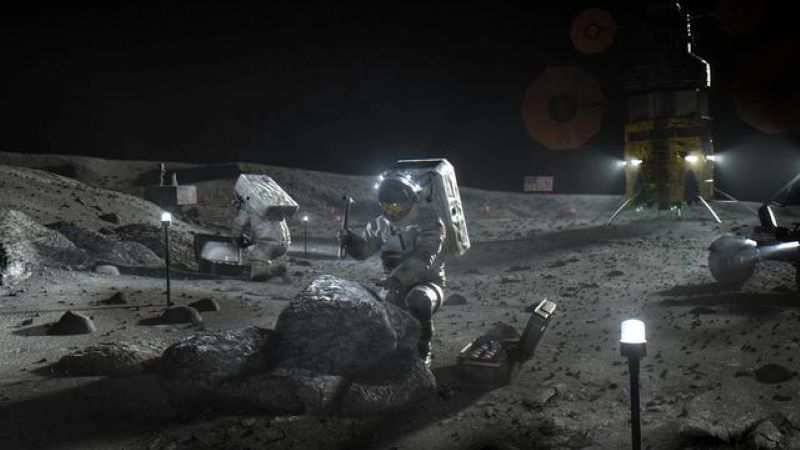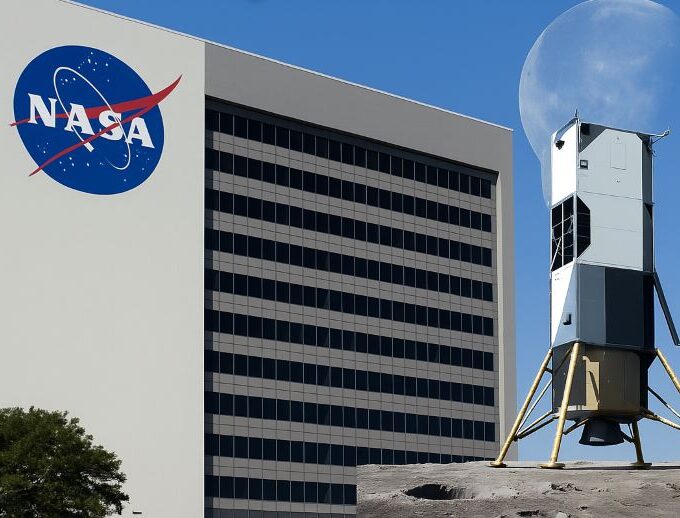NASA, other space agencies, and the commercial space sector are developing ambitious plans for humanity’s future beyond Earth. These plans aim to establish permanent infrastructure on and around the Moon to enable sustained human research, science, and commercial activities on the Moon.
A key challenge is synchronized operations between the Moon, lunar orbit, and Earth, which requires a standardized time system. To address this problem, NASA researchers recently proposed a new lunar timing system for all lunar and paralunar activities. The system is based on relativistic time transformations. By accounting for differences in gravity and motion, this approach ensures precise and reliable timing, which is critical for coordinated operations on and around the Moon.
The research was done by Slava G. Turyshev, James G. Williams, Dale H. Boggs, and Ryan S. Park, four research scientists at NASA’s Jet Propulsion Laboratory (JPL). A preprint of their paper, “Relative Time Shifts between the Solar System Protocenter, Earth, and Moon,” was recently posted online and is currently under review.
Challenges for Space Exploration
The relativistic time transformation (RTT) describes how the passage of time slows down when an observer’s reference frame is accelerated, as predicted by the Lorentz transformation and Einstein’s special theory of relativity (SR). When SR was extended to account for gravity using Einstein’s theory of general relativity (GR), it was determined that acceleration and gravity are essentially the same, while the flow of time changes depending on the strength of the gravitational field. This poses challenges for space exploration, as spacecraft operating beyond Earth are subject to acceleration, microgravity, and low gravity.
In the paper, the research team identified three main time scales. They include:
- Terrestrial time (TT): This time scale is used for the Earth system and represents time at mean sea level, corrected for the Earth’s gravitational potential.
- Barycentric coordinate time (TCB): A time coordinate in the barycentric celestial reference system (BCRS), centered on the barycenter of the Solar System. TCB takes into account the relativistic effects arising from the gravitational potential and the motion of celestial bodies relative to the barycenter, and is therefore essential for high-precision modeling of celestial mechanics and dynamics.
- Barycentric Dynamic Time (TDB): Derived from TCB, but adjusted to run at the same average rate as Earth Time (TT), this adjustment prevents long-term secular drift relative to TT, ensuring that ephemerides remain consistent with Earth observations over time.
Relativistic corrections link these time scales, ensuring that the timing of spacecraft navigation, planetary ephemerides, and communications remain consistent. Without this correction, spacecraft trajectories and mission times would quickly become unreliable, even over relatively short distances.

Differences Between The Moon and Earth
As lunar exploration accelerates, it becomes increasingly important to determine a dedicated Lunar Time (LT) scale and a Lunar-centered Coordinate Reference System (LCRS). Therefore, he and colleagues developed a TL scale to ensure precise timing of activities on and around the Moon. Their approach involves applying the principles of relativity used on Earth and adapting them to the lunar environment. These include:
- The weaker gravity on the Moon causes time to run faster.
- The weaker gravity on the Moon causes lunar clocks to tick faster than Earth clocks.
- The motion of the Moon around the Earth and the Sun introduces periodic time variations.
- Localized gravitational anomalies, known as musk, subtly affect the moon’s gravitational field and, therefore, the flow of time.
“Our results show that lunar time is about 56 microseconds ahead of Earth time per day, and that the lunar orbit causes additional periodic shifts,” Turyshev said. “These periodic oscillations have an amplitude of about 0.47 microseconds and a period of about 27.55 days.” To derive these shifts, Turyshev and his team relied on high-precision data from NASA’s Gravity Recovery and Interior Laboratory (GRAIL) mission, two satellites that studied the moon between 2011 and 2021. In addition to mapping the lunar surface, the twin satellites produced detailed maps of the moon’s gravitational field. This was combined with measurements made by the Lunar Laser Ranging (LLR) experiment, which measures the Earth-Moon distance with millimeter-level accuracy.
Reasons for A Unified Lunar Time System
As Turyshev and his colleagues point out in their paper, there are four reasons why establishing a unified lunar time system is essential to the success of lunar exploration engineering.
- Precision Navigation and Landing: From orbiters to landers and rovers, numerous missions are targeting the lunar surface, and synchronized timing will ensure precise positioning and reduce the risk of errors during critical mission phases.
- Seamless Communications: Coordinating activities between Earth, orbiters, and lunar bases requires consistent time synchronization to avoid communication delays and ensure that data is transmitted in the correct order.
- Collaborative Science: Common time standards enable multiple missions performed by different space agencies and organizations to share and accurately compare data, supporting large-scale studies of lunar geology, seismic activity, and gravity anomalies.
- Autonomous Operations: As lunar missions increase in complexity and duration, a dedicated lunar time system will enable bases and spacecraft to operate independently of Earth, reducing dependence on Earth timekeeping during periods when Earth is not visible.
A new timekeeping system is one of many adjustments that humans must make to become an interplanetary species. As human presence on the Moon increases and becomes permanent this century, a coordinated lunar time system will become increasingly important.












